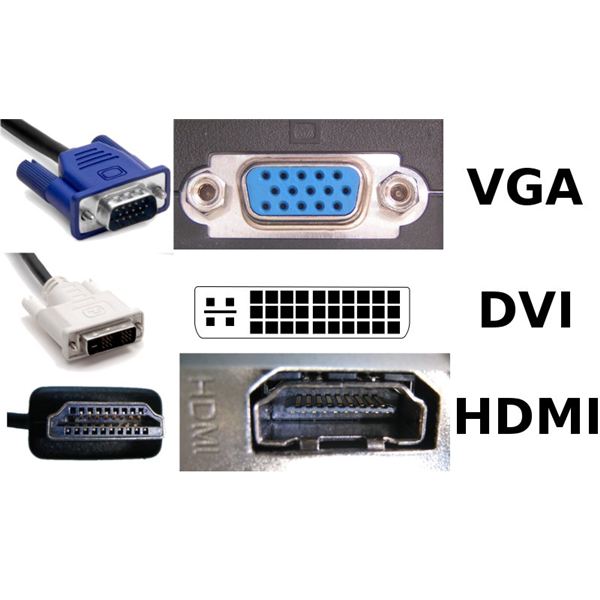What Video Cable Do I Need?
Once upon a time in computerland, there was only one video cable. The one that went from your computer, to your CRT monitor. And all was good in the land.
“One cable to rule them all, one cable to find them, one cable to bring them all and in the video bind them.” – apologies to JRR Tolkein 🙂
Fast forward to 2013. Now there are all kinds of video connection for attaching all types of viewing devices to your computer. It can definitely be a daunting and confusing proposition figuring out which one you need for your situation. We here at Geek Easy Computers understands this, so we are going to try to make it easier for you! Today we are going to introduce to you some of the most common video connections, and explain what they are for, and the differences between them. We stock varying lengths and types of these cables, as well as adapters to go from one to the other or multiple different interfaces.

The most common is still the old standby, VGA (Video Graphics Array). It’s the cable you’ve used to connect your monitor to your computer since the 90s. It’s pretty much still the standard connection you will find on just about every computer today. The VGA cable is a 15-pin connector. It is used today to display high definition resolutions up to 1080p and higher. VGA bandwidth is high enough to support even higher resolutions but there will likely be signal degradation depending on cable quality & length.
The next most popular video cable is HDMI (High-Definition Multimedia Interface). HDMI is a compact audio/video interface for transferring uncompressed video and digital audio from a HDMI-compliant device to a compatible computer monitor, digital television, or digital audio device. HDMI is a digital replacement for existing analog video standards. There are a few different HDMI connectors available which can be used for any TV or PC format, the most common being high definition and 3D. Most large flat screen TVs have a HDMI port.
Another very popular video cable is DVI (Digital Visual Interface). DVI was designed to transmit uncompressed digital video. It can be configured as DVI-D (digital only), DVI-A (analog only), and DVI-I (digital and analog). Because it supports analog, DVI provides optional compatibility with the VGA interface. This led to DVI becoming widely accepted in the computer industry. Mainly found in computer devices, DVI is also present in some consumer electronics such as television sets, although most newer sets only offer HDMI all-digital connectors.
On the Apple side of things, most of the older Macs came with Mini-DVI or HDMI connections. Newer Macs come with a video connection called Mini DisplayPort or more recently, Thunderbolt. It’s basically a miniaturized version of the DisplayPort cable. It was designed to replace VGA, DVI, FPD-Link (another Mac video connection). Mini DisplayPort is primarily used to connect a video source to a display device such as a computer monitor, though it can also be used to transmit audio, USB, and other forms of data. Thunderbolt is backwards compatible with the Mini DisplayPort standard.
Now hopefully that gives you a clearer basic understanding of the most typical video cables you will utilize during normal computer operation. Of course there are many specialized cables that exist for niche situations, that are way too numerous to list in this post, but if you have questions or a need of a special cable, you should know what to do by now. Call your video cable specialist at Geek Easy Computers! We are here to make technology easier!